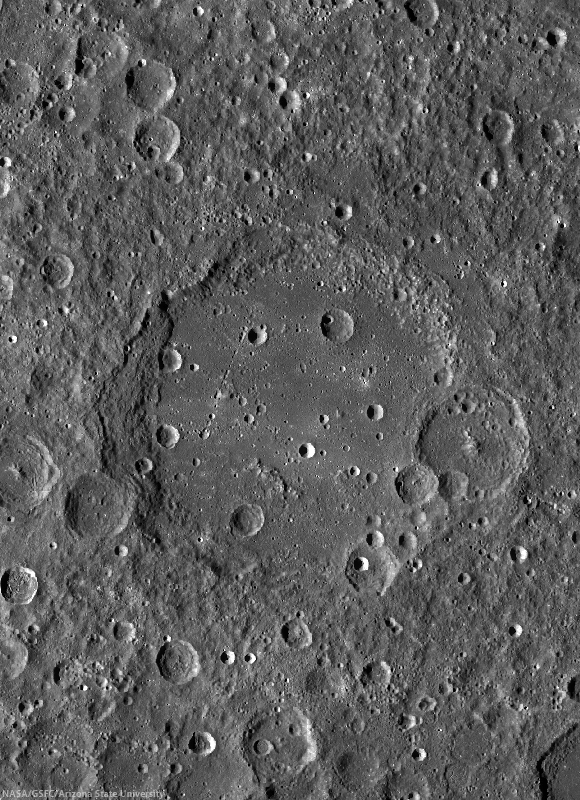Drew Enns
LROC News System
Debris flows occur naturally on most sloped surfaces. This type of 'mass wasting' is actually very common on the Moon. In this case why are small piles of debris accumulating in clumps? This clumping is quite different from other debris flows which are sometimes misidentified as impact melt flows.
Perhaps the debris doesn't have enough energy to make it all the way down, or maybe the surface is not smooth.
Or perhaps the crater wall is not a smooth surface perhaps there are little bumps and depressions. We can see a hint of such undulations from looking at the 'texture' of the surface of the crater wall (and others).
We can also see this uneven wall surface in Digital Terrain Models of young craters. The bumpy surface acts to trap debris in shallow depressions, inhibiting growth of the spectacular debris flows seen elsewhere. Mass wasting is a continuous process and in a few tens of millions of years perhaps the interior of Benedict crater will look more like some other craters we have featured.
Look for more debris along the crater wall of Benedict in the full LROC NAC, HERE.
Related Posts:
Dichotomy
Melt or Rubble
Crater Debris
Inside Catena Mendeleev
Mendeleev in full
LROC News System
Debris flows occur naturally on most sloped surfaces. This type of 'mass wasting' is actually very common on the Moon. In this case why are small piles of debris accumulating in clumps? This clumping is quite different from other debris flows which are sometimes misidentified as impact melt flows.
Perhaps the debris doesn't have enough energy to make it all the way down, or maybe the surface is not smooth.
Or perhaps the crater wall is not a smooth surface perhaps there are little bumps and depressions. We can see a hint of such undulations from looking at the 'texture' of the surface of the crater wall (and others).
 |
| Highly-resampled mosaic of scaled 25000 lines from the center of LROC NAC mosaic M1100280950LR, at a slightly higher resolution and narrower angle of illumination in the original, shows most of Benedict crater with the field of view shown at high resolution in the LROC Featured Image, released May 1, 2013 outlined by the yellow box. Note the asymmetry of the crater floor, an indication of a collapse, or slumping, of the crater's west wall. Spacecraft orbit 14487, August 22, 2012; scaled from 0.96 meters resolution at 26.77° angle of incidence, from 116.04 km [NASA/GSFC/Arizona State University]. |
 |
| Smaller scale LROC WAC context image shows Benedict, near center, and its place within 210 km Mendeleev [NASA/GSFC/Arizona State University]. |
 |
| Labeled oblique HDTV view of Mendeleev from the south, captured from Japan's lunar orbiter SELENE-1 (Kaguya) in 2007. View a full-size unlabeled, closer SELENE HDTV still HERE [JAXA/NHK/SELENE]. |
Related Posts:
Dichotomy
Melt or Rubble
Crater Debris
Inside Catena Mendeleev
Mendeleev in full




No comments:
Post a Comment
Welcome, Lunatics!